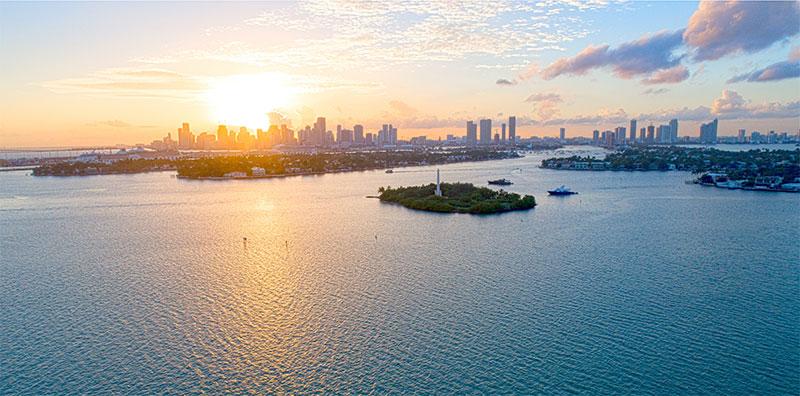Biscayne Bay

Biscayne Bay is a vital natural resource that provides economic, environmental, and recreational benefits to all of Miami-Dade County, including Miami Beach. It supports a variety of marine life and provides vital habitat for wildlife including imperiled species such as the West Indian manatee (Trichechus manatus), the bottlenose dolphin (Tursiops truncates), and the American crocodile (Crocodylus acutus). Biscayne Bay is also home to Johnson’s Seagrass (Halophila johnsonii), the first and only marine plant listed within the Endangered Species Act due to its limited geographic range and habitat loss. Seagrass is one of the cornerstone species to keeping the Biscayne Bay ecosystem thriving.
As one of Florida’s largest estuaries, Biscayne Bay’s critical role in the natural and urban environment has been threatened by manmade actions. The challenges facing the Bay are complex and regional in nature. In the summer of 2020, an unprecedented fish kill and algal bloom occurred in the northern Biscayne Bay basin. These events are believed to be caused by multiple factors including extremely high water temperatures, low-dissolved oxygen, increased freshwater flows from the Biscayne Canal and Little River, and an influx of nutrients. Nutrients enter the system from agricultural runoff, leaking septic tanks, fertilizers, pet waste, and yard clippings.
Nitrogen and phosphorus are primary nutrients in many fertilizers. Seagrasses and other marine life located in the Bay are susceptible to the impacts of excess and improper fertilizer use. When it rains, stormwater collects potential pollutants, including sediments, nutrients (from lawn fertilizers), bacteria (from animal waste), pesticides, metals (from rooftops and roadways), and petroleum by-products (from leaking vehicles). The excess of these nutrients can be detrimental to our waterways. Increased nutrients are one of the main pollutants degrading the water quality and health of Biscayne Bay.
Minimizing impacts to the ecological balance of this estuary is a critical goal for the City of Miami Beach. The City recently adopted one of the strongest fertilizer ordinances in the State of Florida to further support its commitment to protect the Bay.

